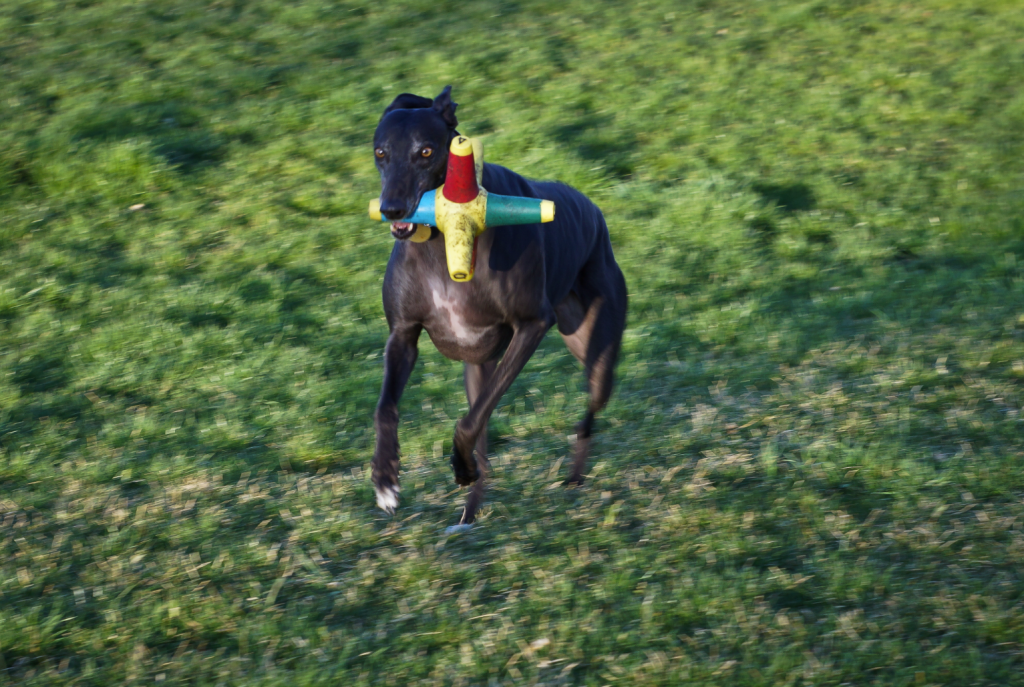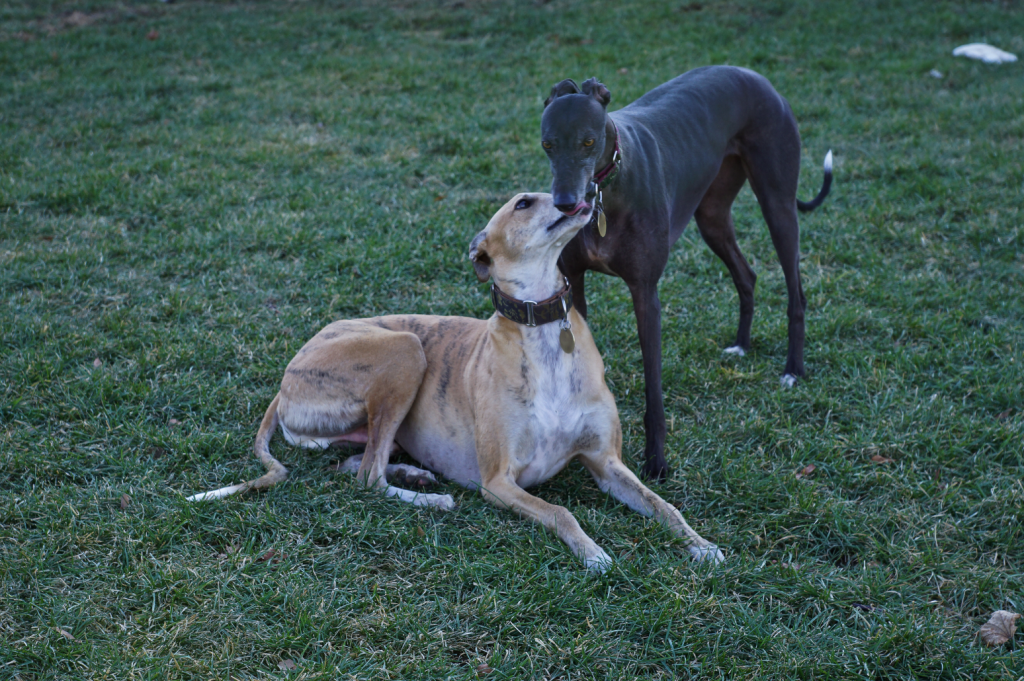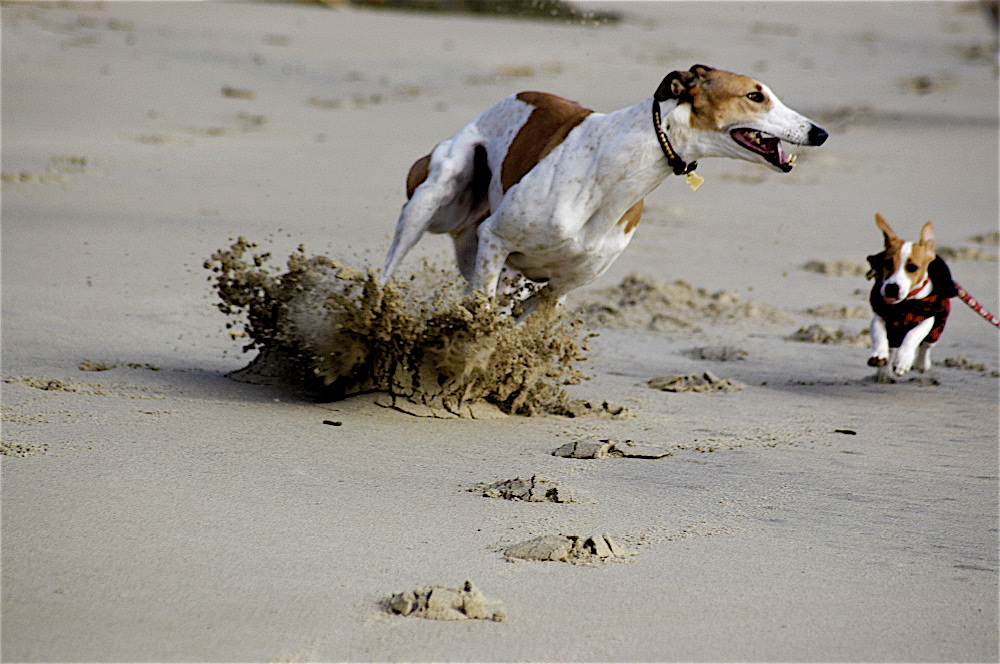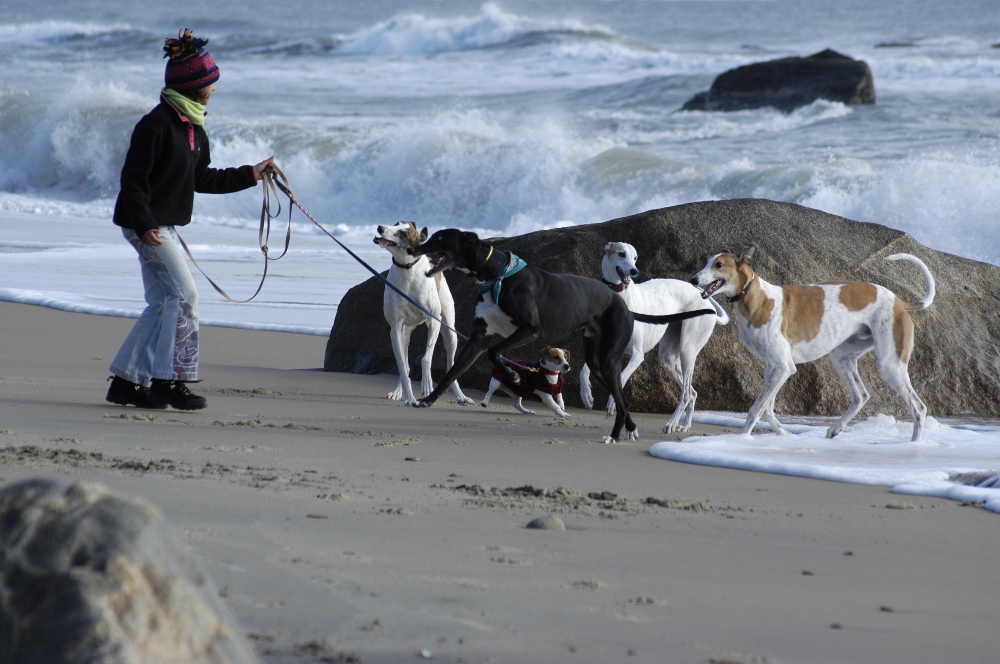This is Guinevere. Guinnie is an off-the-track greyhound that we adopted from Greyhound Friends in Hopkinton, MA. She is bringing me back her favorite toy for another toss. Look at those eyes.
Most greyhounds do not fetch. They often do not sit because of their big haunch muscles, and many of them have no idea how to climb stairs when they first come into a home. They will either not try at all, or try to do the whole flight at once.
Every May and October Greyhound Friends has a big greyhound reunion. Doting owners arrive with their dogs – often multiples since it is hard to have just one greyhound. It is an amazing sight – a huge field with hundreds of beautiful dogs. To me, it looks like a gathering of gorgeous fairy dogs and their human attendants.
Sometime in the afternoon there is a competition. Longest tail. Softest coat. Baldest butt. Oldest. Youngest. Best look alikes. And the grand finale: best trick. The running joke is, “And it isn’t much.” Greyhounds do not do tricks – or at least none that I have met. The best trick that I have seen in twenty years of greyhounds is a prolonged sit, followed by a high five, first with the right paw and then the left. That got a lot of applause.
We took home a lot of ribbons last fall: Guinnie won baldest butt. Cho won oldest. And Guinnie came in second for best look alike. I thought Cho should have won it with his twin – a winsome Saluki mix, but the judges gave it Guinnie and her twin. But anyone who has a greyhound will tell you that they feel like a winner. No ribbons needed.




